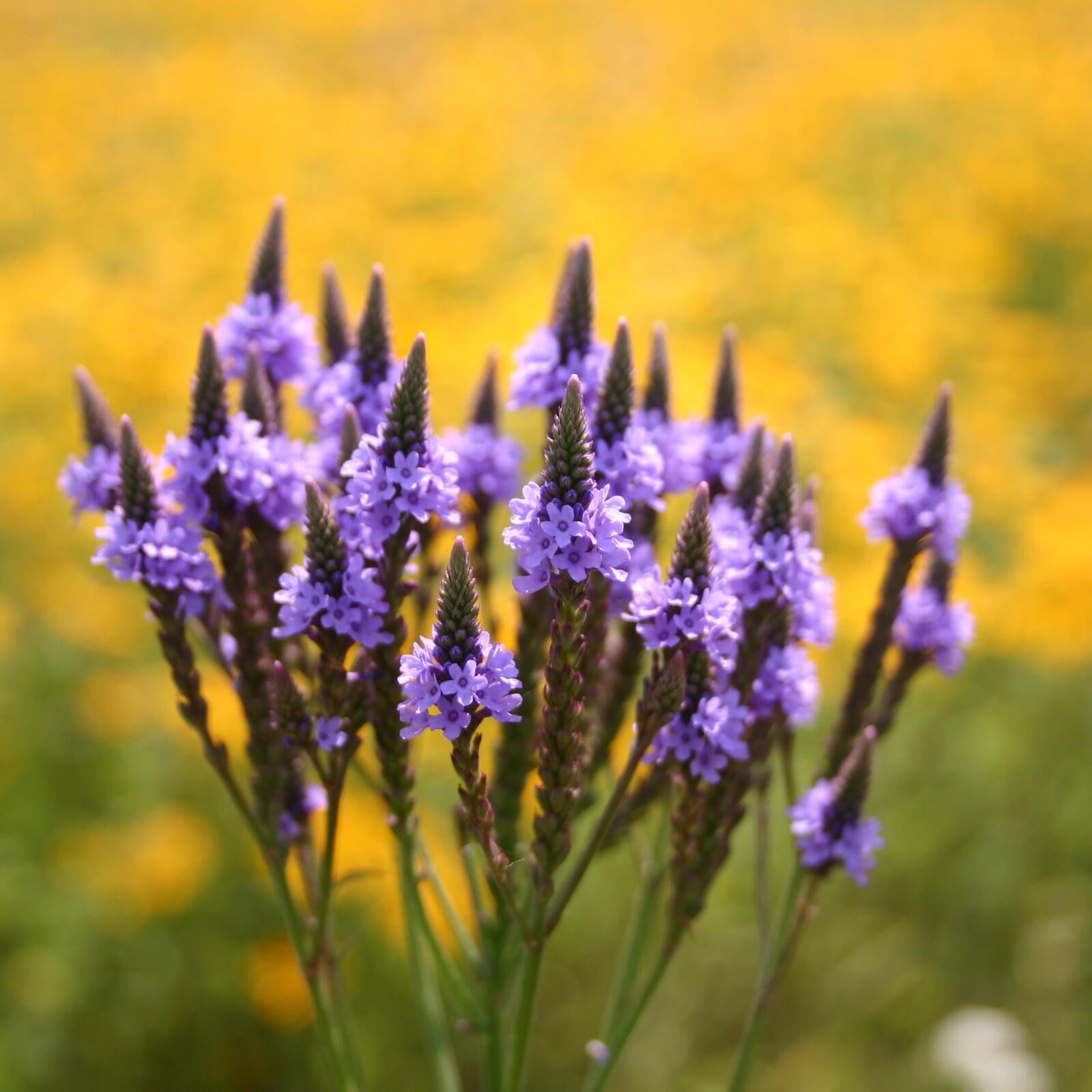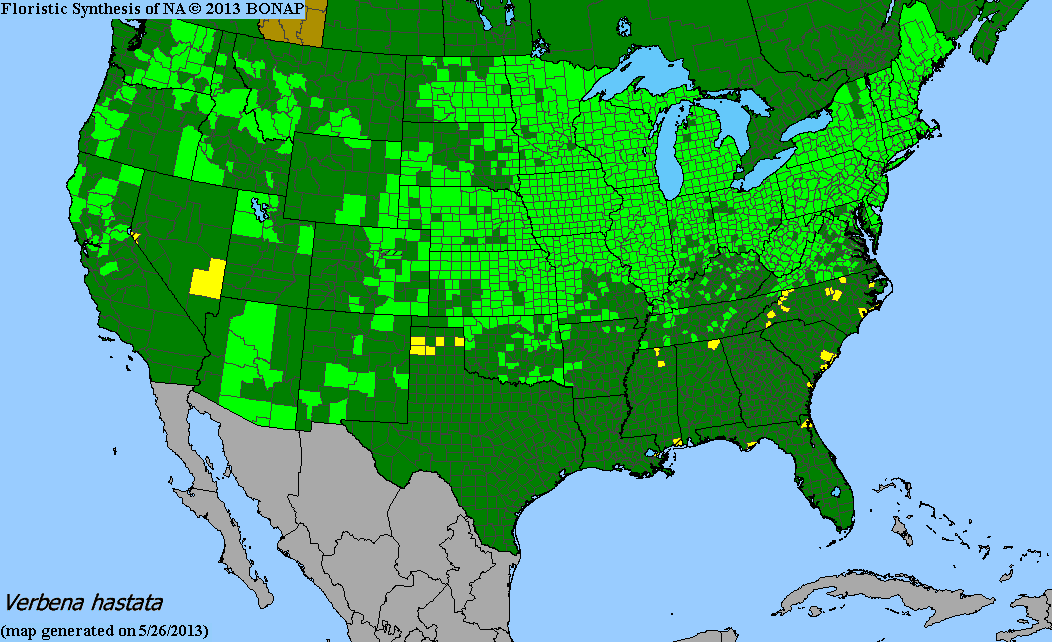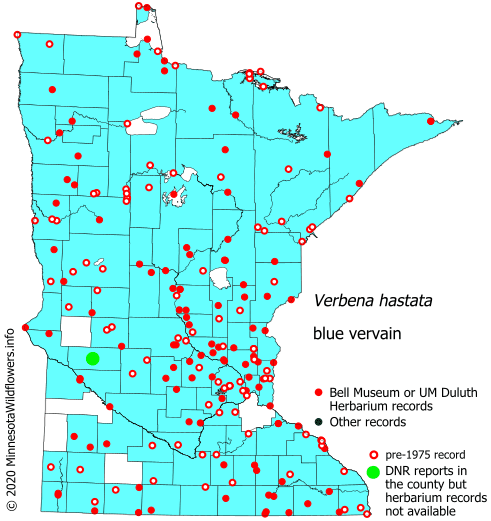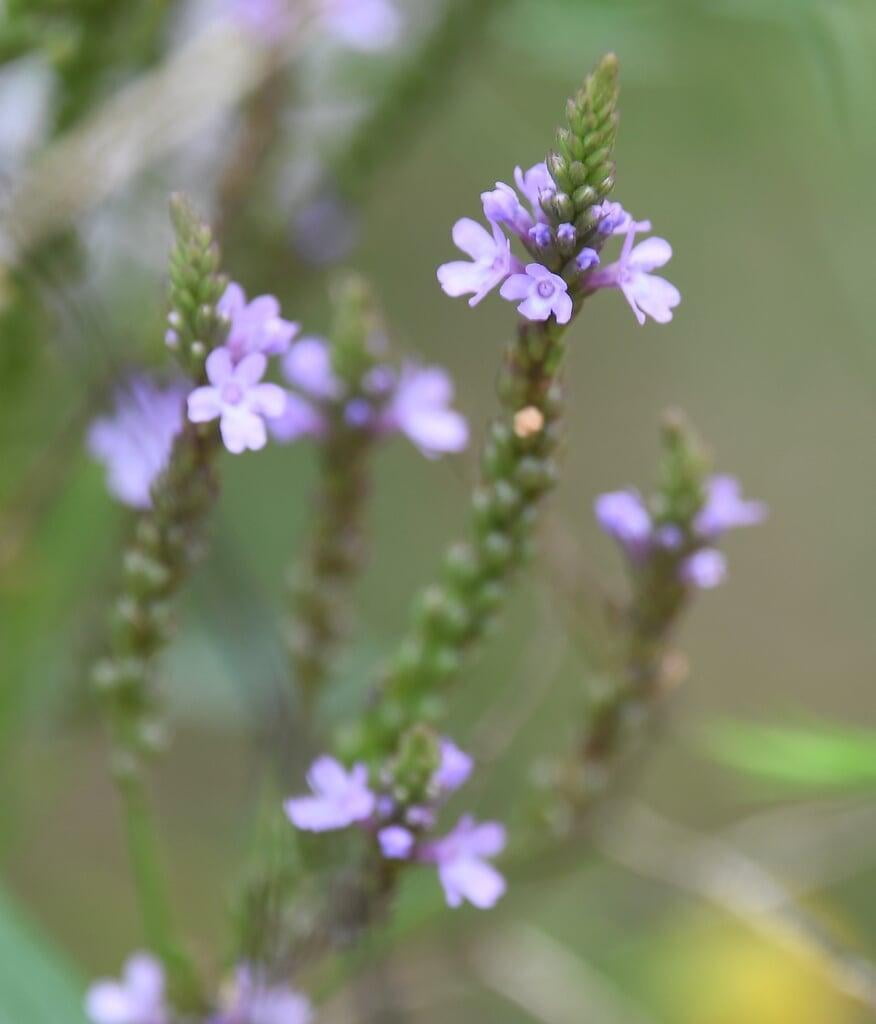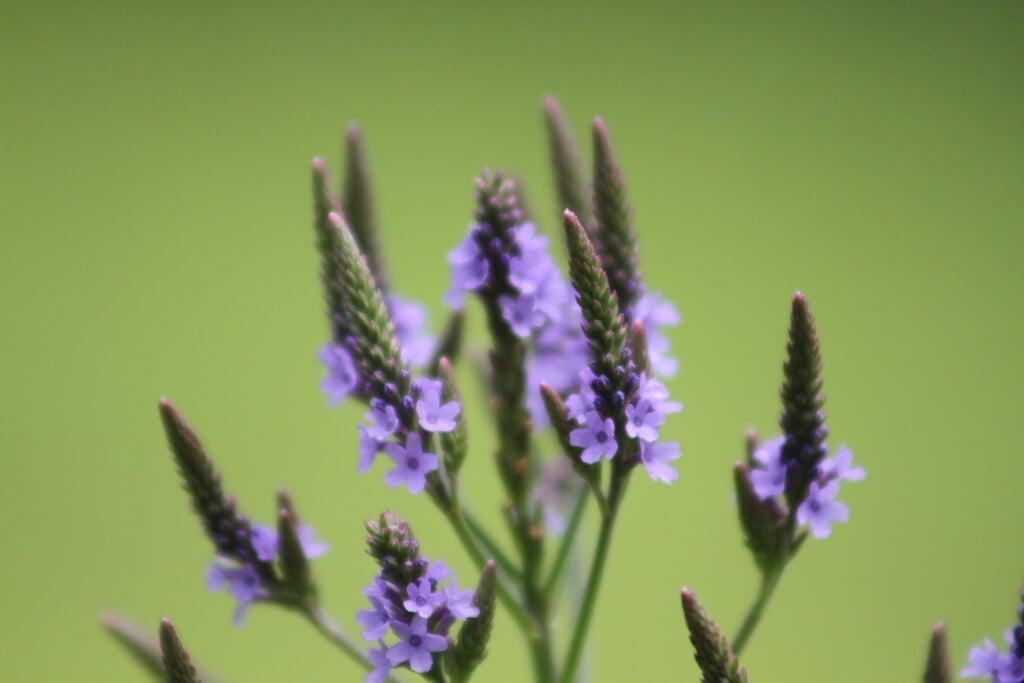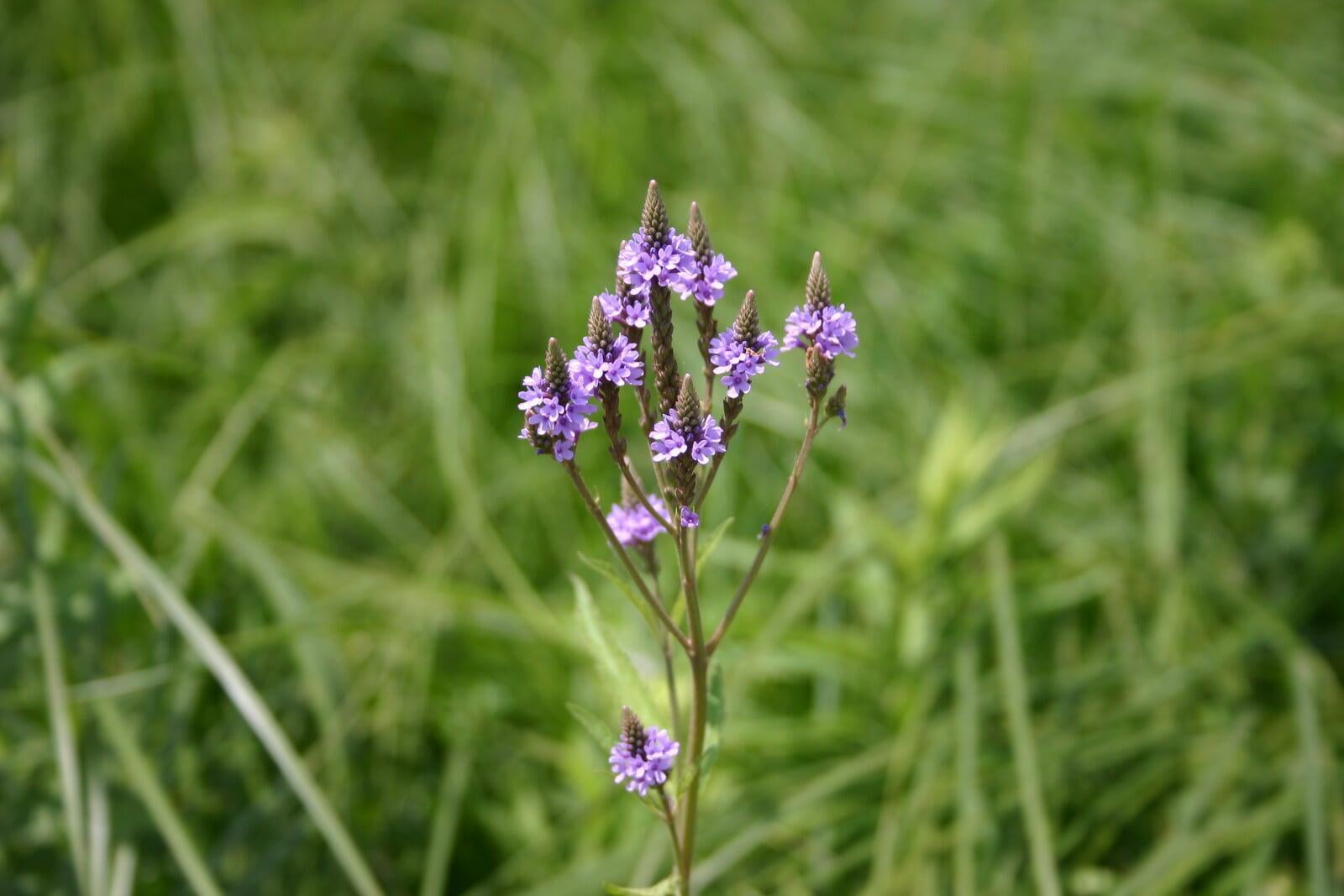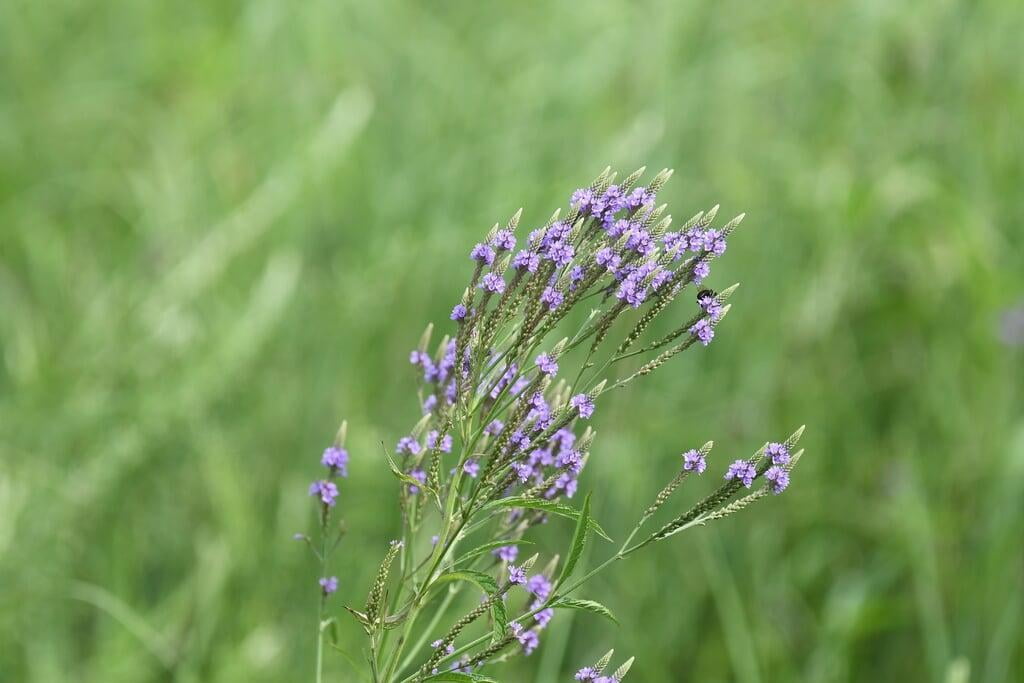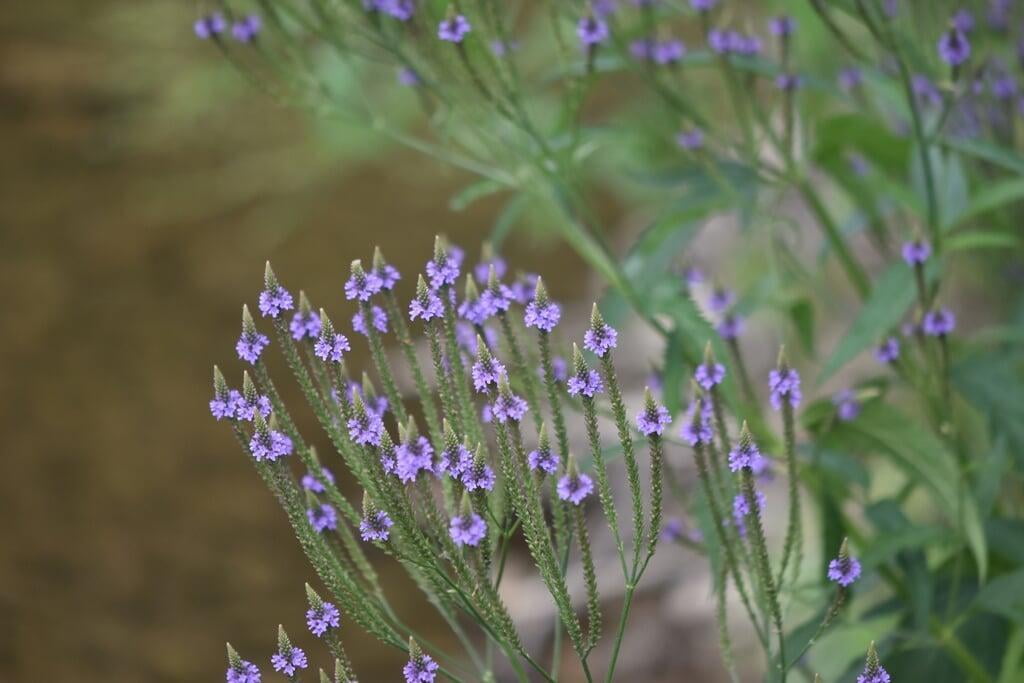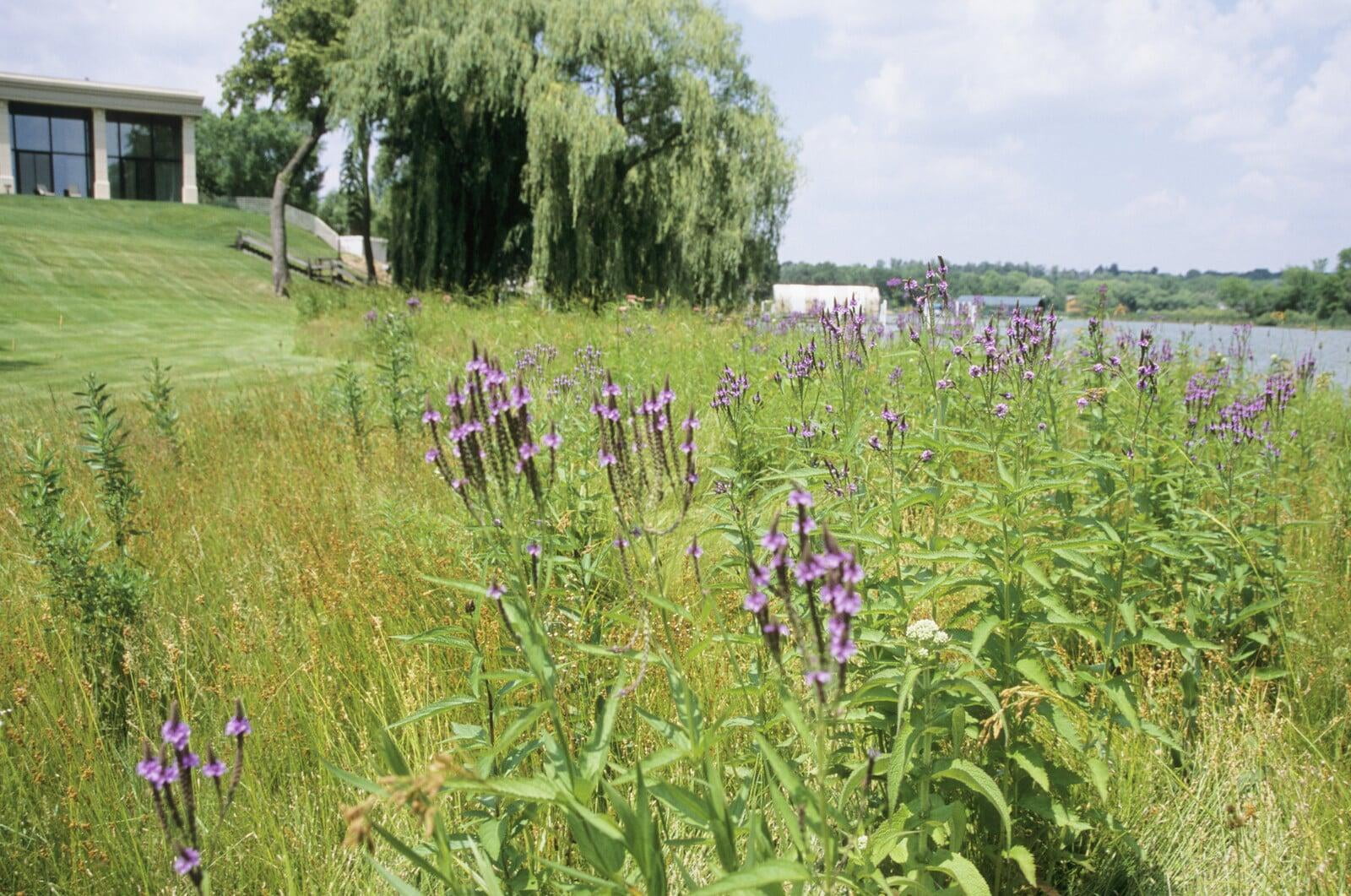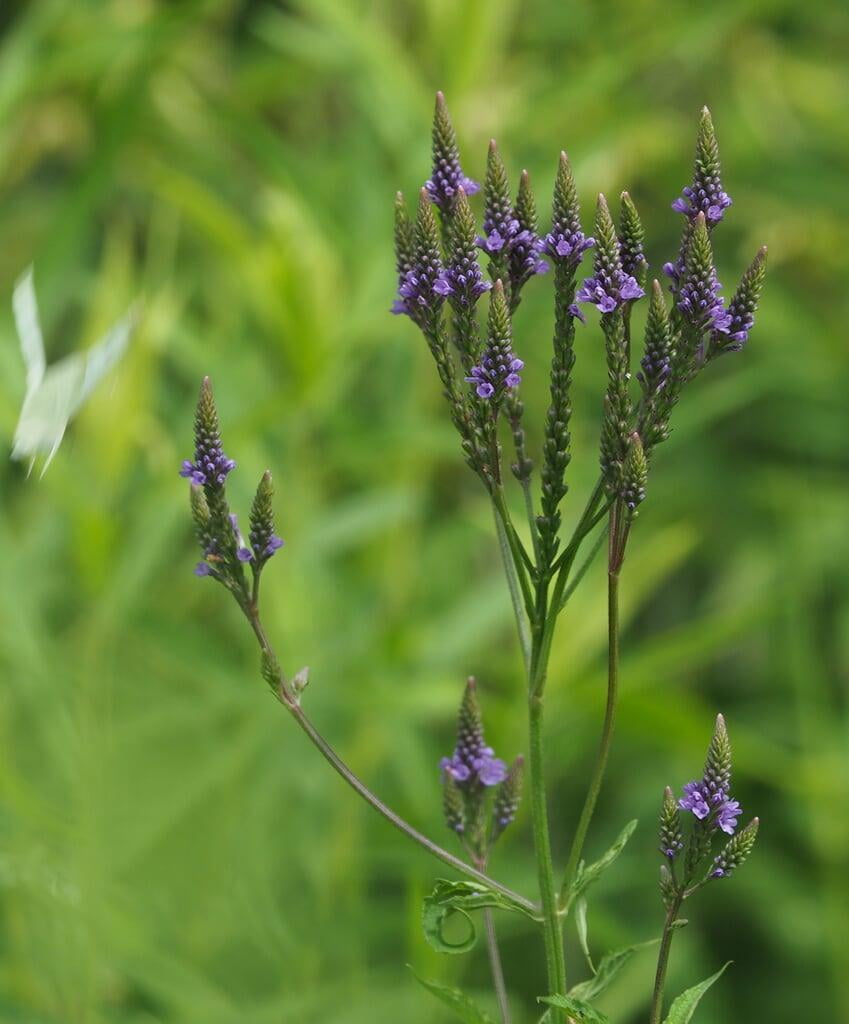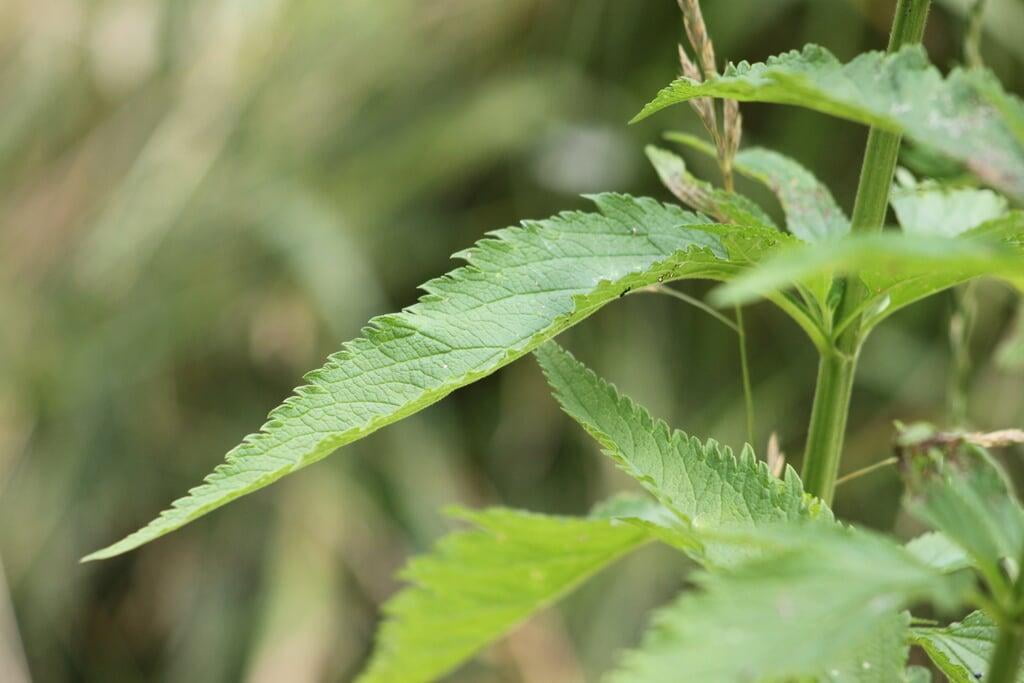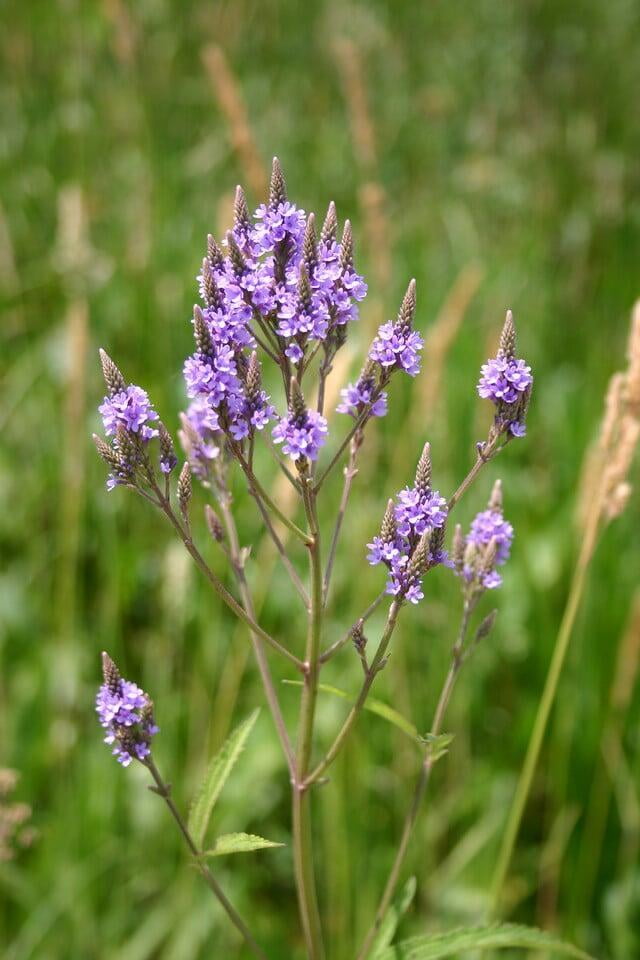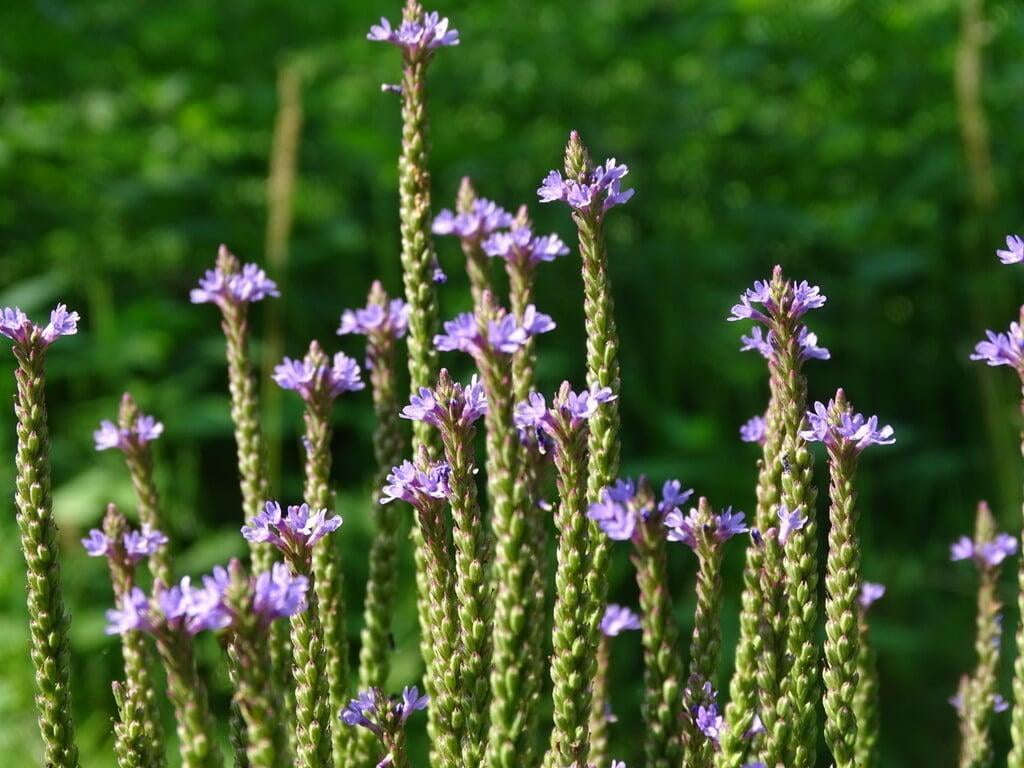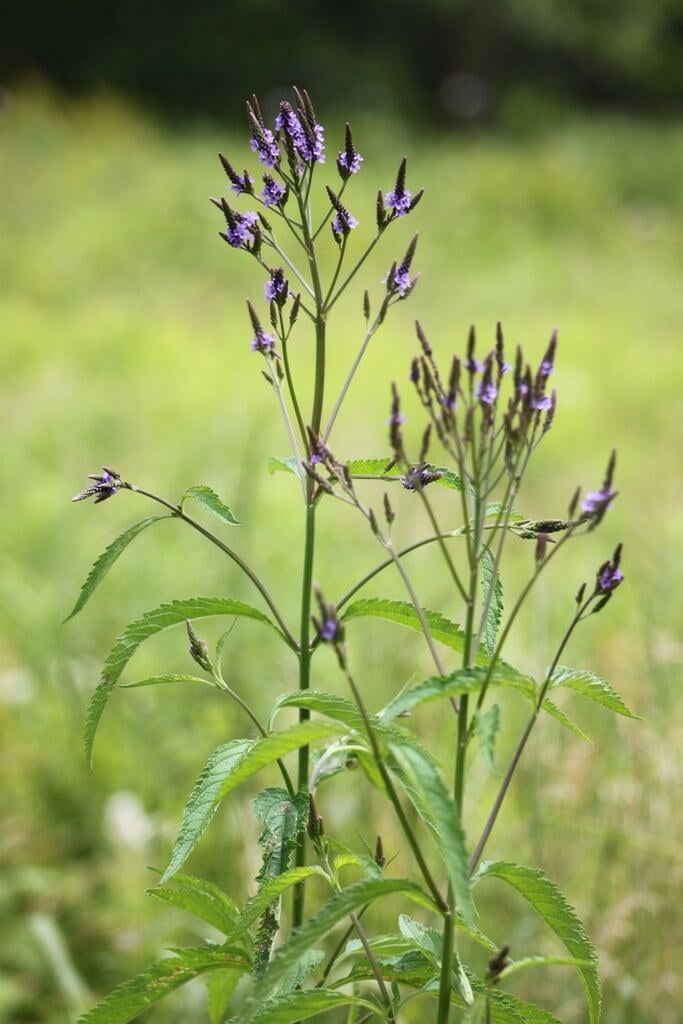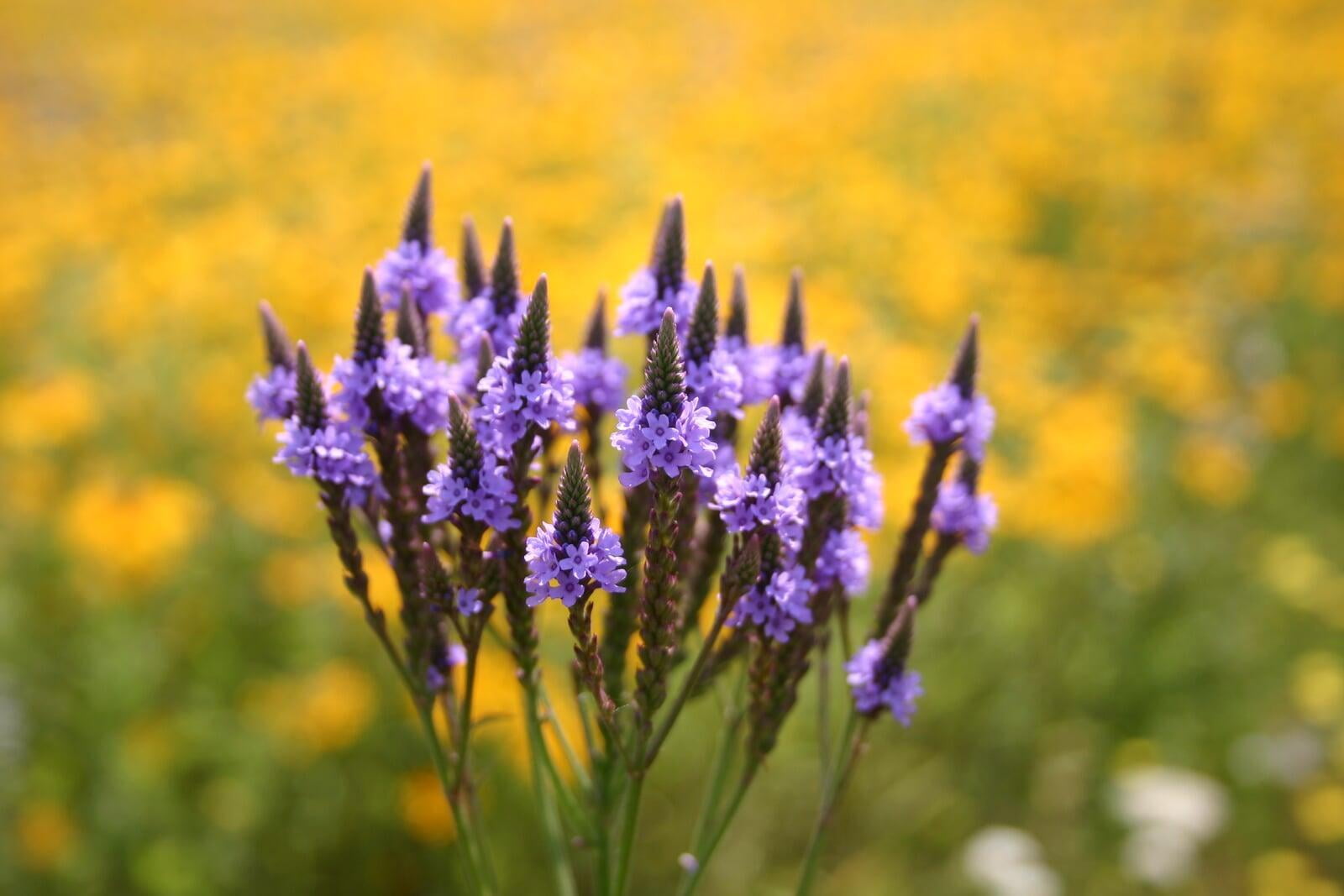Verbena hastata
Blue vervain Description:
Verbena hastata, commonly known as Blue Vervain, is a herbaceous perennial plant that is native to North America. It can be found in wet meadows, marshes, and along streambanks from the eastern part of Canada to the eastern United States.
Blue Vervain typically grows 1 to 6 feet tall and has a clump-forming habit. It has narrow, lance-shaped leaves that are arranged oppositely on the stem. In mid-summer to early fall, the plant produces spikes of small, blue to violet flowers that are highly attractive to pollinators such as bees and butterflies.
Verbena hastata is an excellent plant for naturalizing in a wetland garden or meadow, and it has a number of medicinal uses. It prefers a moist to wet soil in full sun to partial shade and can be used in borders, wildflower meadows, or as a specimen plant. The plant is deer-resistant and can be easily grown from seed or transplants. The attractive flowers and medicinal properties make it a popular choice for herbalists and gardeners alike.
Native Range:
Blue vervain is found across the entire continental United States. In Minnesota, Blue vervain can be found in nearly all regions of the state.
Standard Plant Information:
Plant Height: 1' - 6'
Bloom Time: June - September
Preferred Habitat: Does well in full sun. Often found in wet fields, shorelines, and ditches.
Sowing:
For most homeowners, the best option is to scatter seed on the ground by hand broadcasting at a minimum of 16-64 pls ounces per acre. For even coverage, we recommend that you broadcast seed in perpendicular rows across the site to ensure even coverage.
You’ll want to broadcast any grass seed first, which will get raked into the soil lightly. Next, it is ideal to mulch the area lightly with either a clean (no seed) straw or preferably with our native Little Bluestem straw, sold at our retail garden centers. After a light mulching is complete, now it’s time to broadcast your native wildflower seeds, which should not be raked into the soil. A good rain or watering is sufficient to cover the seed.
Planting:
Simply dig a hole in the soil slightly larger than the plant’s roots. Ensure that the soil line of the plant is maintained during the transfer (i.e. the plant should be at the same level with the ground as it was in the pot). Pack any loose dirt back around the plant and make sure you water it well the same day to ensure it has the best chance of survival.

